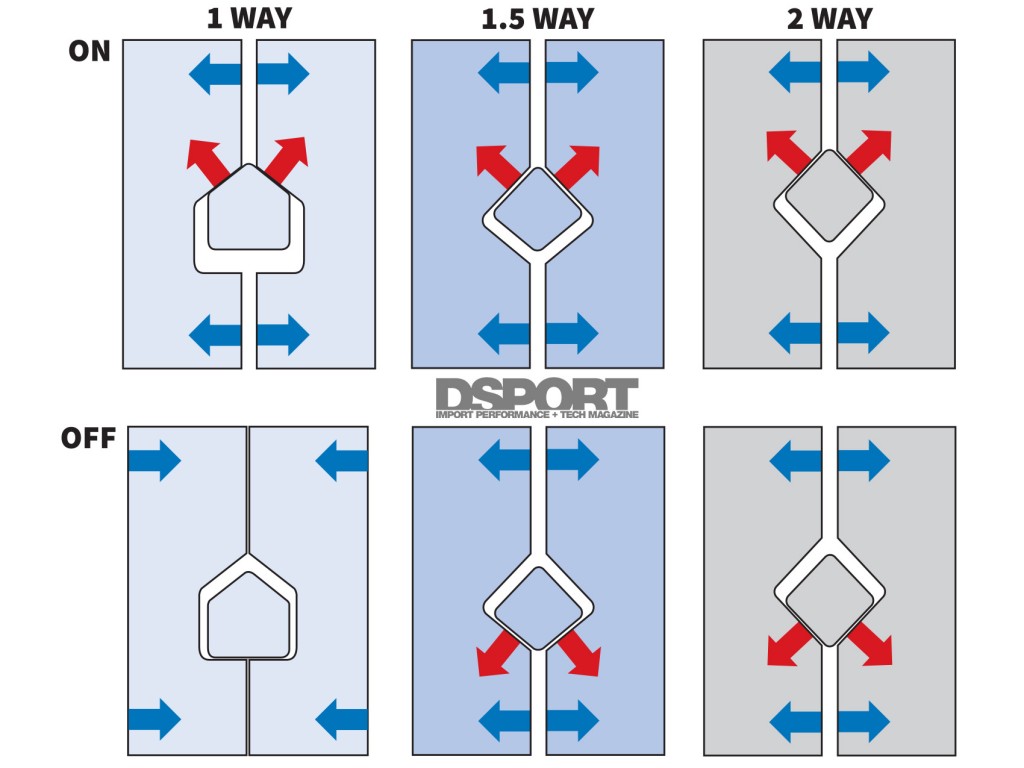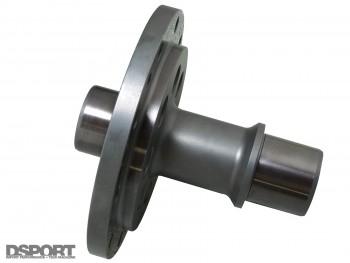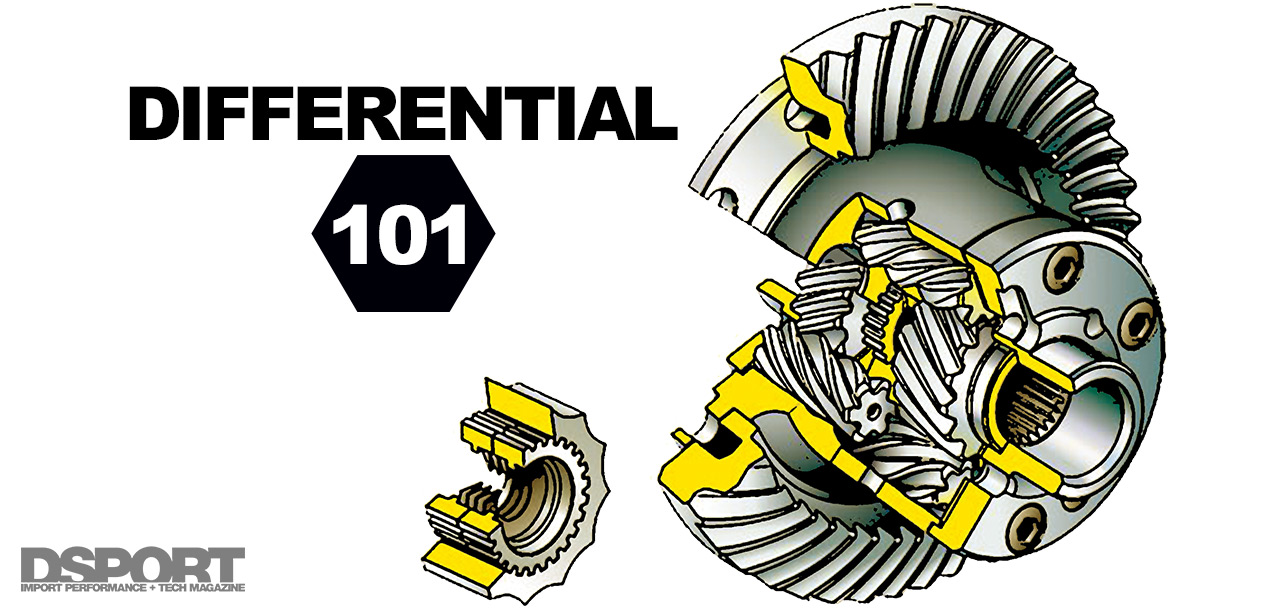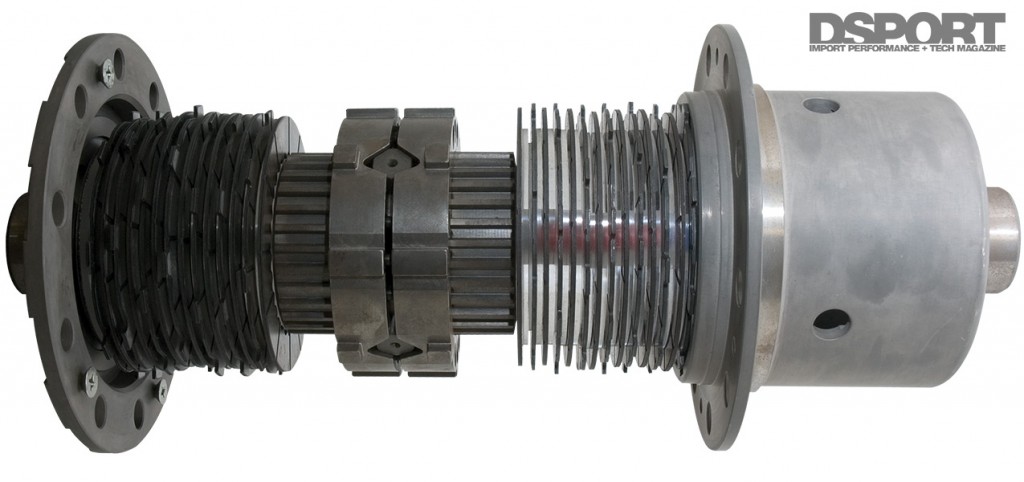Up On Three
“Up on three” is the phrase that describes a car that grabs the road so tightly through a turn that the inside rear wheel exceeds the travel of the suspension and lifts off the ground. It is an exciting feeling, but not as exciting as realizing that the open differential pushing the car has effectively “lifted” off the throttle. As a result the load on the suspension is suddenly released, unpredictably shifting the weight of the car. When the weight is shifted the suspension becomes loaded again. This less than graceful transition of weight and suspension loading is more than enough to throw a car spinning out of control.
Dr. Ferdinand Porsche is credited with developing the first limited-slip differential in 1932. To combat problems like the “up on three” and to further enhance the distribution of power between the drive wheels, Dr. Porsche set out to develop the first Limited-Slip Differential (LSD). The purpose of the LSD is to strategically distribute the delivery of torque between the drive wheels. Today, these LSDs are separated into two types, speed sensitive and torque sensitive. These two types are then further segregated by differences in design.
The LSD Experience
What can you expect after installing an LSD? If you are all about straight-line acceleration or drag-racing, you should see an immediate improvement in your launches. Instead of the tire with the least traction propelling your vehicle, you’ll have both drive tires to double the traction. More traction results in better acceleration.
If you also like to attack the corners, the experience will vary a bit between the different types of LSDs. On rear wheel drive vehicles, you should notice that the car will have more “oversteer” than before. Since nearly all factory vehicles are set up with an excessive amount of “understeer”, the “oversteer” provided by the LSD will in most cases help the vehicle get back to a more desirable neutral steer. On front-wheel drive vehicles, the type of LSD will impact how the handling responds. If a full “2-way” style differential is installed, the vehicle will tend to understeer or push in a turn when off throttle as the inside wheel may experience some slipping. However, if a “1-way” differential is employed, the limited-slip effect only comes into play when the vehicle is accelerating. This generally provides a better line for track use.
 A 1.5-way differential offers nearly the same performance as a 2-way without the harshness, clunking and noise.
A 1.5-way differential offers nearly the same performance as a 2-way without the harshness, clunking and noise.
1-Way, 1.5-Way, 2-Way
We’ve already tossed around the terminology of 1-way, 1.5-way and 2-way with regards to LSDs. As previously mentioned, some manufacturers use a cam-groove design in their LSD that turns the limited-slip on and off. A 1-way differential will only have a positive lock to limit slip during acceleration. A 2-way differential will limit slip during both acceleration and deceleration. A 1.5-way differential is actually a 2-way differential with a different lockup rate between acceleration and deceleration. Depending on the application, a 1.5-way may provide a more forgiving balance for beginners during no-throttle conditions. It can also be more effective for front-drive cars that need extra stability during braking.
The Anti-Diff: Spool
The anti-differential is more commonly referred to as a spool. A spool carries the ring gear as does the differential. However instead of allowing different rotational speeds from each axle, a spool spins both axles at the same exact speed. The torque delive ry through a spool is always split 50/50 between each drive wheel.
ry through a spool is always split 50/50 between each drive wheel.
Spools are typically used in competition-only drag racing and some circle track applications. They are not intended or recommended for street use. However when used as intended, a spool will provide unmatched performance and reliability. There are fewer moving parts and no wearable components. Costs for spools are generally lower than performance LSDs.
The Bottom Line
It’s sometimes the parts that you never see that affect performance the most. In the case of limited-slip differentials, an enthusiast can now direct power to twice as many drive wheels. The payoffs can be seen in both straight-line and cornering performance. When the budget permits an aftermarket LSD can offer significant strength and performance advantages over an OEM unit. When you are ready to stop slipping and start gripping, a performance LSD should be part of your plan.



